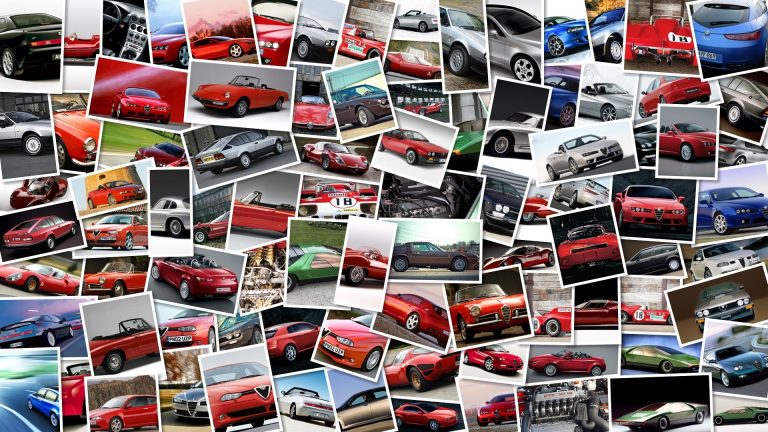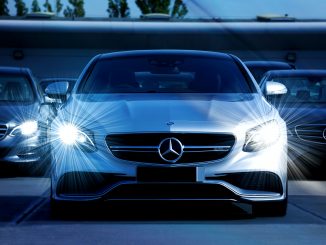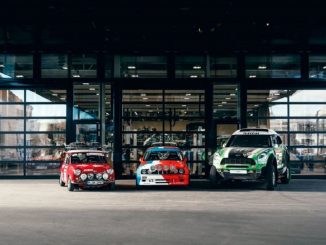
The Yamaha YZF-R1 2009 has been presented for the European market, showing a radical superbike look with some great technological innovation.
The 998cc engine has been developed with a MotoGP culture, and never before has this bike been so linked to the technology developed in MotoGP.
The bike has a special Deltabox alluminium chassis and improvements to the engine have been made through the mechanics, not the electronics of the bike.
The racing double overhead camshaft is a significant element for this bike, giving it incredible linear torque and high traction levels.
Torque control is the crowning success of this 2009 YZF-R1.
In the absence of finding a press release in English, I reproduce here, in synthesis, some of the aspects of this bike.
The engine is a new in straight four cylinder twin cam, liquid cooled and four valves.
The high compression ratio of 12.
7:1 contributes to the extraordinary power of this motor’s 182hp at 12,500 rpm, and torque of 11.
8kgm at 10,000 rpm.
The camshaft is entirely new, with variable camshaft timing based on the racing technology originally developed for the Yamaha YZR-M1.
The YZF-R1 in this way takes on many of the MotoGP characteristics of the M1.
Yamaha engineers have worked on the difference between torque and riding control, when the level of torque variates according to engine revs, independent of the rider’s acceleration.
This impedes the rider’s selection of torque, and Yamaha has been working on reducing the difference between talk and riding control.
The variable camshaft timing allows the engine to optimise torque.
The timing on this YZF-R1 is 270º – 180º – 90º – 180º.
In this case each piston has its own independent movement, rather than being in sync with the others.
Inertial torque has been reduced, while the asymmetric sequence increases power at low and medium revs.
Fuel injection has also been modified, along with electronics system, while a stabilising platform has also been developed to minimise the vibrations produced by the piston movement.
The bike has new alluminium pistons and a “closed-deck” cylinder.
Other aspects include the YCC-I or Yamaha Chip Controlled Intake, which is comprised of an electronically controlled air flow system.
There is also a chip controlled throttle (YCC-T) which allows for impressive control at any regime, reducing the excessive flux of air and fuel in the case of a sudden throttle opening.
The YZF-R1 has been developed with a secondary injection system, giving great acceleration response.
The bike is also the first Yamaha supersports road model with D-mode system, allowing the rider to choose a performance that meets his needs.
Three modes are available with Standard, A and B, meaning the rider can adapt to riding conditions with a command on the handle of the bike.
Standard gives overall optimal performance, A guarantees prompt engine response and B gives a smooth response to accleration.
A new aspiration system has been designed to increase pressure in the airbox and guarantee greater performance at high speeds.
Transmission and clutch have been modified to avoid excessive torque transfer from the rear wheel when passing through lower gears.
The exhaust system is 4-2-1-2 (in which the first and fourth and second and third are connected with this ratio) and has high double silencers.
The elegant mufflers produce exactly the intense, emotional sound you’d be looking for.
The Deltabox chassis has been totally redesigned and balance and rigidity have been optimised.
Stability at high speeds is now improved, giving greater riding feel and traction on exiting corners.
The YZF-R1 has compact dimensions and lowered centre of gravity and the engine position itself has been moved forward 12 mm.
This gives the front wheel greater road contact.
The fuel tank (18 litre capacity) has also been modified, all of which give greater riding feel.
Light materials have been used, including the smaller rear frame made from magnesium.
The fork is also new and lighter contributing to the overall stability of the bike.
The rear shock absorber is adjustable at both high and low speeds, and the motorcycle is fitted with bottom link suspension.
The fork has 43mm stems and functions indenpendently with the left holding hydraulic pressure and the right for extension.
The 310mm disc brakes are lighter with double calipers and six pistons.
The rear disc is 220mm in diameter with floating caliper and single aluminium piston.
There is an innovative cooling system with plastic tubes between the radiator and the engine.
The new rear wheel has dimensions 190/55R-17.
New headlights and a red chassis are available along with new instrumentation.
The motorcycle comes with YEC Racing Parts, original racing components developed from Yamaha Motor Engineering.
For more information go to www.
yamaha-racingkitparts.
com.





Leave a Reply